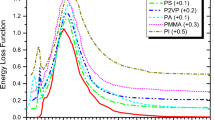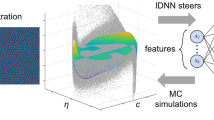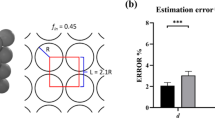Abstract
Currently, cancer is one of the most serious problems facing humanity, and one of the most widely used and versatile diagnostic techniques is magnetic resonance imaging (MRI), which may require an injection of contrast agents (CAs). CAs are paramagnetic compounds capable of increasing the relaxation rate of water protons, thereby obtaining clearer MRI examination images. In this work, the solvent and thermal effects on spectroscopic parameters of [Fe(H2O)6]2+, [Mn(H2O)6]2+, [Gd(H2O)8]3+, and γ-Fe2O3, coordinated to explicit water molecules, were studied in light of the classical and quantum methods. For the classical part of the simulation, a new method of selection of configurations from the molecular dynamics simulations, denominated optimal wavelet signal compression algorithm (OWSCA), is presented. Our findings indicate that OWSCA leads to a good agreement with the experimental available data and the thermal effects greatly influence our system. Thus, the molecular dynamics calculations are important for this type of system. Our results show the γ-Fe2O3 as a promising alternative to conventional contrast agents.








Similar content being viewed by others
References
Telegrafo M, Rella L, Stabile Ianora AA et al (2015) Unenhanced breast MRI (STIR, T 2-weighted TSE, DWIBS): an accurate and alternative strategy for detecting and differentiating breast lesions. Magn Reson Imaging 33:951–955. doi:10.1016/j.mri.2015.06.002
Chaudhuri S, Basu K, Sengupta B et al (2008) Ground- and excited-state proton transfer and antioxidant activity of 3-hydroxyflavone in egg yolk phosphatidylcholine liposomes: absorption and fluorescence spectroscopic studies. Luminescence 23:397–403. doi:10.1002/bio.1052
de Angelis C, Brizzi RF, Pellicano R (2013) Endoscopic ultrasonography for pancreatic cancer: current and future perspectives. World J Gastrointest Oncol 4:220–230. doi:10.3978/j.issn.2078-6891.2013.002
Mancini DT, Sen K, Barbatti M et al (2015) Excited-state proton transfer can tune the color of protein fluorescent markers. ChemPhysChem 16:3444–3449. doi:10.1002/cphc.201500744
Esteban-Gómez D, de Blas A, Rodríguez-Blas T et al (2012) Hyperfine coupling constants on inner-sphere water molecules of Gd(III)-based MRI contrast agents. ChemPhysChem 13:3640–3650. doi:10.1002/cphc.201200417
Patinec V, Rolla GA, Botta M et al (2013) Hyperfine coupling constants on inner-sphere water molecules of a triazacyclononane-based Mn(II) complex and related systems relevant as MRI contrast agents. Inorg Chem 52:11173–11184. doi:10.1021/ic4014366
Klug G, Kampf T, Bloemer S et al (2010) Intracellular and extracellular T 1 and T 2 relaxivities of magneto-optical nanoparticles at experimental high fields. Magn Reson Med 64:1607–1615. doi:10.1002/mrm.22557
Werner EJ, Datta A, Jocher CJ, Raymond KN (2008) High-relaxivity MRI contrast agents: where coordination chemistry meets medical imaging. Angew Chem Int Ed (Engl) 47:8568–8580. doi:10.1002/anie.200800212
Perazella MA (2009) Current status of gadolinium toxicity in patients with kidney disease. Clin J Am Soc Nephrol 4:461–469. doi:10.2215/CJN.06011108
Yoffe S, Leshuk T, Everett P, Gu F (2013) Superparamagnetic iron oxide nanoparticles (SPIONs): synthesis and surface modification techniques for use with MRI and other biomedical applications. Curr Pharm Des 19:493–509. doi:10.2174/1381612811306030493
Sun C, Lee JSH, Zhang M (2008) Magnetic nanoparticles in MR imaging and drug delivery. Adv Drug Deliv Rev 60:1252–1265. doi:10.1016/j.addr.2008.03.018
Schwarz S, Fernandes F, Sanroman L et al (2009) Synthetic and biogenic magnetite nanoparticles for tracking of stem cells and dendritic cells. J Magn Magn Mater 321:1533–1538. doi:10.1016/j.jmmm.2009.02.081
Jung H, Park B, Lee C et al (2014) Dual MRI T 1 and T 2(*) contrast with size-controlled iron oxide nanoparticles. Nanomedicine 10:1679–1689. doi:10.1016/j.nano.2014.05.003
Oliveira LCA, Fabris JD, Pereira MC (2013) Óxidos de ferro e suas aplicações em processos catalíticos: uma revisão. Quim Nova 36:123–130
Ghose SK, Waychunas GA, Trainor TP, Eng PJ (2010) Hydrated goethite (α-FeOOH) (100) interface structure: ordered water and surface functional groups. Geochim Cosmochim Acta 74:1943–1953. doi:10.1016/j.gca.2009.12.015
Oliveira LCA, Ramalho TC, Gonçalves M et al (2007) Pure niobia as catalyst for the oxidation of organic contaminants: mechanism study via ESI-MS and theoretical calculations. Chem Phys Lett 446:133–137. doi:10.1016/j.cplett.2007.08.037
Grau-Crespo R, Al-Baitai AY, Saadoune I, de Leeuw NH (2010) Vacancy ordering and electronic structure of γ-Fe3O4 (maghemite): a theoretical investigation. J Phys: Condens Matter 22:255401. doi:10.1088/0953-8984/22/25/255401
Gonçalves MA, da Cunha EFF, Peixoto FC, Ramalho TC (2015) Probing thermal and solvent effects on hyperfine interactions and spin relaxation rate of δ-FeOOH(100) and [MnH3buea(OH)]2−: toward new MRI probes. Comput Theor Chem 1069:96–104. doi:10.1016/j.comptc.2015.07.006
Gonçalves MA, Peixoto FC, da Cunha EFF, Ramalho TC (2014) Dynamics, NMR parameters and hyperfine coupling constants of the Fe3O4(100)—water interface: implications for MRI probes. Chem Phys Lett 609:88–92. doi:10.1016/j.cplett.2014.06.030
Rapaport DC (2004) The art of molecular dynamics simulation. Cambridge University Press, Cambridge
van der Wijst T, Fonseca Guerra C, Swart M et al (2009) Rare tautomers of 1-methyluracil and 1-methylthymine: tuning relative stabilities through coordination to Pt II complexes. Chem Eur J 15:209–218. doi:10.1002/chem.200801476
Mancini DT, Souza EF, Caetano MS, Ramalho TC (2014) 99Tc NMR as a promising technique for structural investigation of biomolecules: theoretical studies on the solvent and thermal effects of phenylbenzothiazole complex. Magn Reson Chem 52:129–137. doi:10.1002/mrc.4043
Tachikawa H (2002) Ab initio molecular dynamics (MD) calculations of hyperfine coupling constants of methyl radical. Chem Phys Lett 352:113–119. doi:10.1016/S0009-2614(01)01427-0
Coutinho K, Georg HCC, Fonseca TLL et al (2007) An efficient statistically converged average configuration for solvent effects. Chem Phys Lett 437:148–152. doi:10.1016/j.cplett.2007.02.012
Coutinho K, Canuto S, Zerner MC (2000) Monte Carlo-quantum mechanics study of the solvatochromic shifts of the lowest transition of benzene. J Chem Phys 112:9874–9880. doi:10.1063/1.481624
Schroder P (1995) Wavelets for computer graphics: a primer. IEEE Comput Graph Appl Mag 15:76–84. doi:10.1109/38.376616
Domingues MO, Gomes SM, Cortina E (1995) Biorthogonal wavelets applied to meteosat image compressing. In: Szu HH (ed) Wavelet and Aplications II, vol 2491. Spie, Orlando, FL, pp 726–733
Ducla-Soares JL, Santos-Bento M, Laranjo S et al (2007) Wavelet analysis of autonomic outflow of normal subjects on head-up tilt, cold pressor test, Valsalva manoeuvre and deep breathing. Exp Physiol 92:677–686. doi:10.1113/expphysiol.2007.038026
Domingues MO, Mendes O, da Costa AM (2005) On wavelet techniques in atmospheric sciences. Adv Space Res 35:831–842. doi:10.1016/j.asr.2005.02.097
Jørgensen JE, Mosegaard L, Thomsen LE et al (2007) Formation of γ-Fe2O3 nanoparticles and vacancy ordering: an in situ X-ray powder diffraction study. J Solid State Chem 180:180–185. doi:10.1016/j.jssc.2006.09.033
Baerends EJ, Autschbach J, Bashford D et al (2009) ADF2009.01, SCM, Theoretical Chemistry, Vrije Universiteit, Amsterdam
Frisch MJ, Trucks GW, Schlegel HB et al, Gaussian 09
Duin V (2002) ReaxFF user manual
Aryanpour M, Duin ACTV, Kubicki JD (2013) Development of a reactive force field for iron-oxyhydroxide systems. J Phys Chem A 21:6298–6307
Rolla GA, Iglesias CP, Botta M, Tei L, Helm L (2013) 1H and 17O NMR relaxometric and computational study on macrocyclic Mn(II) complexes. Inorg Chem 52:3268–3279
Micskei K, Powell DH, Helm L, Brücher E, Merbach AE (1993) Water exchange on [Gd(H2O)8]3+ and [Gd(PDTA)(H2O)2]—in aqueous solution: a variable-pressure, -temperature and -magnetic field 17O NMR study. Magn Reson Chem 31:1011–1020. doi:10.1002/mrc.1260311111
MATLAB 7.6 and statistics toolbox
Mitchell M (1998) An introduction to genetic algorithms. The MIT Press, 209 p
Hedegård ED, Kongsted J, Sauer SP (2012) Improving the calculation of electron paramagnetic resonance hyperfine coupling tensors for d-block metals. Phys Chem Chem Phys 14:10669. doi:10.1039/c2cp40969k
da Silva Gonçalves A, França TCC, Caetano MS, Ramalho TC (2014) Reactivation steps by 2-PAM of tabun-inhibited human acetylcholinesterase: reducing the computational cost in hybrid QM/MM methods. J Biomol Struct Dyn 32:301–307. doi:10.1080/07391102.2013.765361
Ramalho TC, da Cunha EFF, de Alencastro RB (2004) Solvent effects on 13 C and 15 N shielding tensors of nitroimidazoles in the condensed phase: a sequential molecular dynamics/quantum mechanics study. J Phys: Condens Matter 16:6159–6170. doi:10.1088/0953-8984/16/34/015
Coutinho K, Canuto S (1997) Solvent effects from a sequential Monte Carlo—quantum mechanical approach. Adv Quantum Chem 28:89–105
Misiti M. Misiti Y, Oppenheim G, Poggi JM (2007) Wavelets and their applications, ISTE DSP Series
Kamada M, Toda M, Sekijima M et al (2011) Analysis of motion features for molecular dynamics simulation of proteins. Chem Phys Lett 502:241–247. doi:10.1016/j.cplett.2010.12.028
Lepage M, Gore JC (2004) Contrast mechanisms in magnetic resonance imaging. J Phys: Conf Ser 3:78–86. doi:10.1088/1742-6596/3/1/008
Hedegård ED, Kongsted J, Sauer SPA (2011) Optimized basis sets for calculation of electron paramagnetic resonance hyperfine coupling constants: aug-cc-pVTZ-J for the 3d atoms Sc–Zn. J Chem Theory Comput 7:4077–4087. doi:10.1021/ct200587k
Godbout N, Salahub DR, Andzelm J, Wimmer E (1992) Optimization of Gaussian-type basis sets for local spin density functional calculations. Part I. Boron through neon, optimization technique and validation. Can J Chem 70:560–571. doi:10.1139/v92-079
Ziener CH, Bauer WR, Melkus G et al (2006) Structure-specific magnetic field inhomogeneities and its effect on the correlation time. J Magn Reson Imaging 24:1341–1347. doi:10.1016/j.mri.2006.08.005
Rodríguez-Rodríguez A, Esteban-Gómez D, de Blas A et al (2012) Solution structure of Ln(III) complexes with macrocyclic ligands through theoretical evaluation of 1H NMR contact shifts. Inorg Chem 51:13419–13429. doi:10.1021/ic302322r
Harris D, Loew GH, Komornicki A (1997) Structure and relative spin-state energetics of [Fe(H 2 O) 6] 3+: a comparison of UHF, Møller–Plesset, nonlocal DFT, and semiempircal INDO/S calculations. J Phys Chem A 101:3959–3965. doi:10.1021/jp963296x
Borel A, Yerly F, Helm L, Merbach AE (2002) Multiexponential electronic spin relaxation and Redfield’s limit in Gd(III) complexes in solution: consequences for 17O/1H NMR and EPR simultaneous analysis. J Am Chem Soc 124:2042–2048. doi:10.1021/ja016919f
Gao RX, Yan R (2011) From Fourier transform to wavelet transform: a historical perspective. Wavelets. Springer, Boston, pp 17–32
Galdino B, Oliveira D, De Cássia R et al (2009) Uma comprovação químico-quântica sobre a formação de ligações de hidrogênio e interações secundárias em sistemas heterocíclicos intermoleculares Introdução. Orbital 1:167–182
Grabowski SJ (2011) What is the covalency of hydrogen bonding? Chem Rev 111:2597–2625. doi:10.1021/cr800346f
Koch U, Popelier PLA (1995) Characterization of C–H–O hydrogen bonds on the basis of the charge density. J Phys Chem A 99:9747–9754. doi:10.1021/j100024a016
Oliveira BG, Araújo RCMU, Ramos MN, Oliveira GB, Araújo RCMU (2010) A topologia molecular QTAIM e a descrição mecânico-quântica de ligações de hidrogênio e ligações de di-hidrogênio. Quim Nova 33:1155–1162. doi:10.1590/S0100-40422010000500029
Cortesguzman F, Bader RFW (2005) Complementarity of QTAIM and MO theory in the study of bonding in donor–acceptor complexes. Coord Chem Rev 249:633–662. doi:10.1016/j.ccr.2004.08.022
Ruiz E, Cirera J, Alvarez S (2005) Spin density distribution in transition metal complexes. Coord Chem Rev 249:2649–2660. doi:10.1016/j.ccr.2005.04.010
Alarcón E, González-Béjar M, Gorelsky S et al (2010) Photophysical characterization of atorvastatin (Lipitor®) ortho-hydroxy metabolite: role of hydroxyl group on the drug photochemistry. Photochem Photobiol Sci 9:1378–1384. doi:10.1039/c0pp00102c
Powell DH, Dhubhghaill OMN, Pubanz D et al (1996) Structural and dynamic parameters obtained from 17O NMR, EPR, and NMRD studies of monomeric and dimeric Gd 3+ complexes of interest in magnetic resonance imaging: an integrated and theoretically self-consistent approach 1. J Am Chem Soc 7863:9333–9346
Ramalho TC, da Cunha EFF, de Alencastro RB (2004) Theoretical study of adiabatic and vertical electron affinity of radiosensitizers in solution part 2: analogues of tirapazamine. J Chem Theory 03:1–13. doi:10.1142/S0219633604000866
Huang CH, Tsourkas A (2013) Gd-based macromolecules and nanoparticles as magnetic resonance contrast agents for molecular imaging. Curr Top Med Chem 13:411–421. doi:10.2174/1568026611313040002
Acknowledgements
The authors thank the Brazilian agencies FAPEMIG, FAPERJ, CAPES, and CNPq for the financial support of this research and the UFLA and UFF for infrastructure and encouragement of this work. This work was also supported by Excellence project FIM.
Author information
Authors and Affiliations
Corresponding author
Rights and permissions
About this article
Cite this article
Gonçalves, M.A., Santos, L.S., Prata, D.M. et al. Optimal wavelet signal compression as an efficient alternative to investigate molecular dynamics simulations: application to thermal and solvent effects of MRI probes. Theor Chem Acc 136, 15 (2017). https://doi.org/10.1007/s00214-016-2037-z
Received:
Accepted:
Published:
DOI: https://doi.org/10.1007/s00214-016-2037-z




